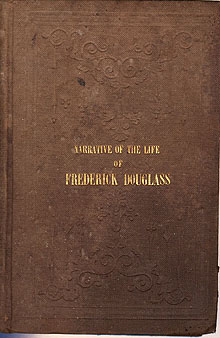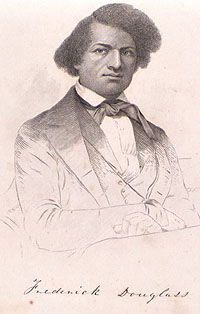 |
CONTENTS |

As Frederick Douglass writes in the last paragraph of this autobiography, in 1841 he became an orator for the Anti-Slavery Society. By 1845 he had become well-known for his performances at abolitionist rallies, but he was so articulate and intelligent that many people had begun to doubt he had ever actually been a slave. He wrote his Narrative both to "prove" his identity, and to bring his eloquent indictment of slavery to a wider audience. It was probably the best-selling of all the fugitive slave narratives: 5000 copies were sold within four months of its first printing, and 6 new editions were published between 1845 and 1849. Douglass published two later versions of his autobiography: My Bondage and My Freedom (1855) and The Life and Times of Frederick Douglass (1881).
Narrative of the Life of Frederick Douglass, An American Slave, Written by Himself (Boston: Published at the Anti-Slavery Office, 1845)
 |
CONTENTS |
